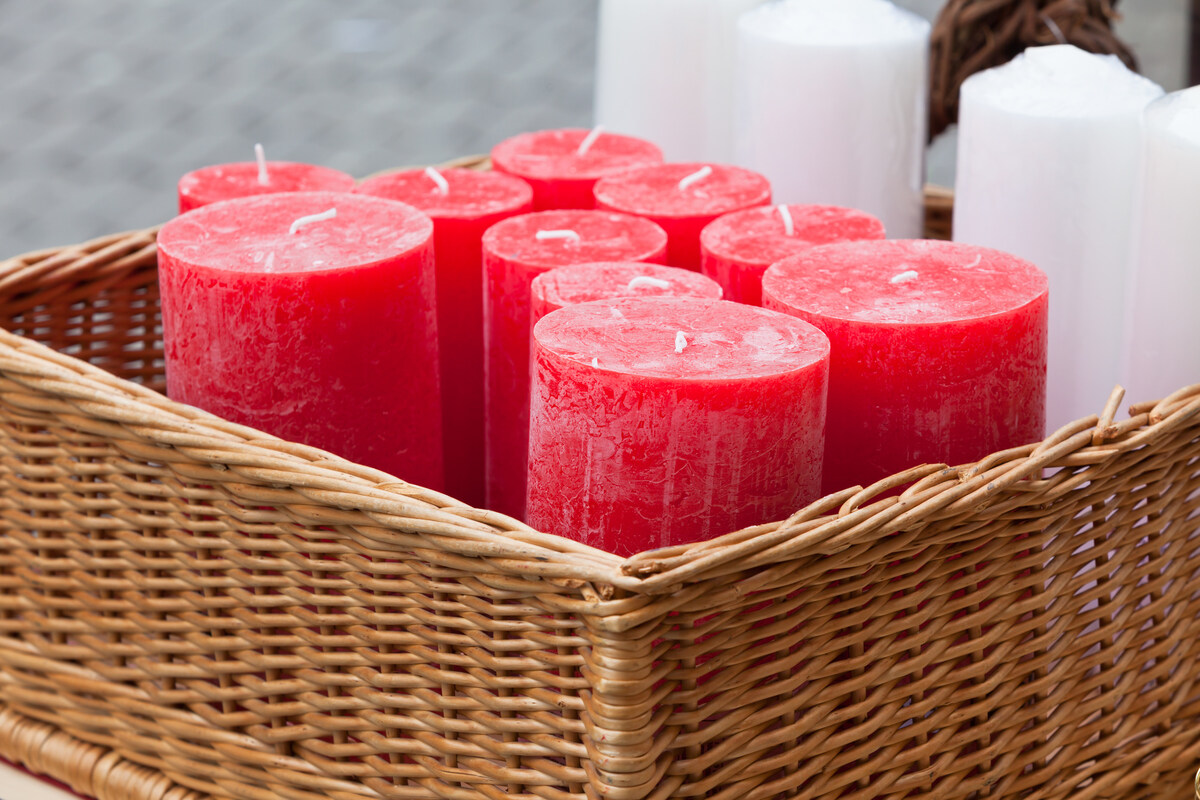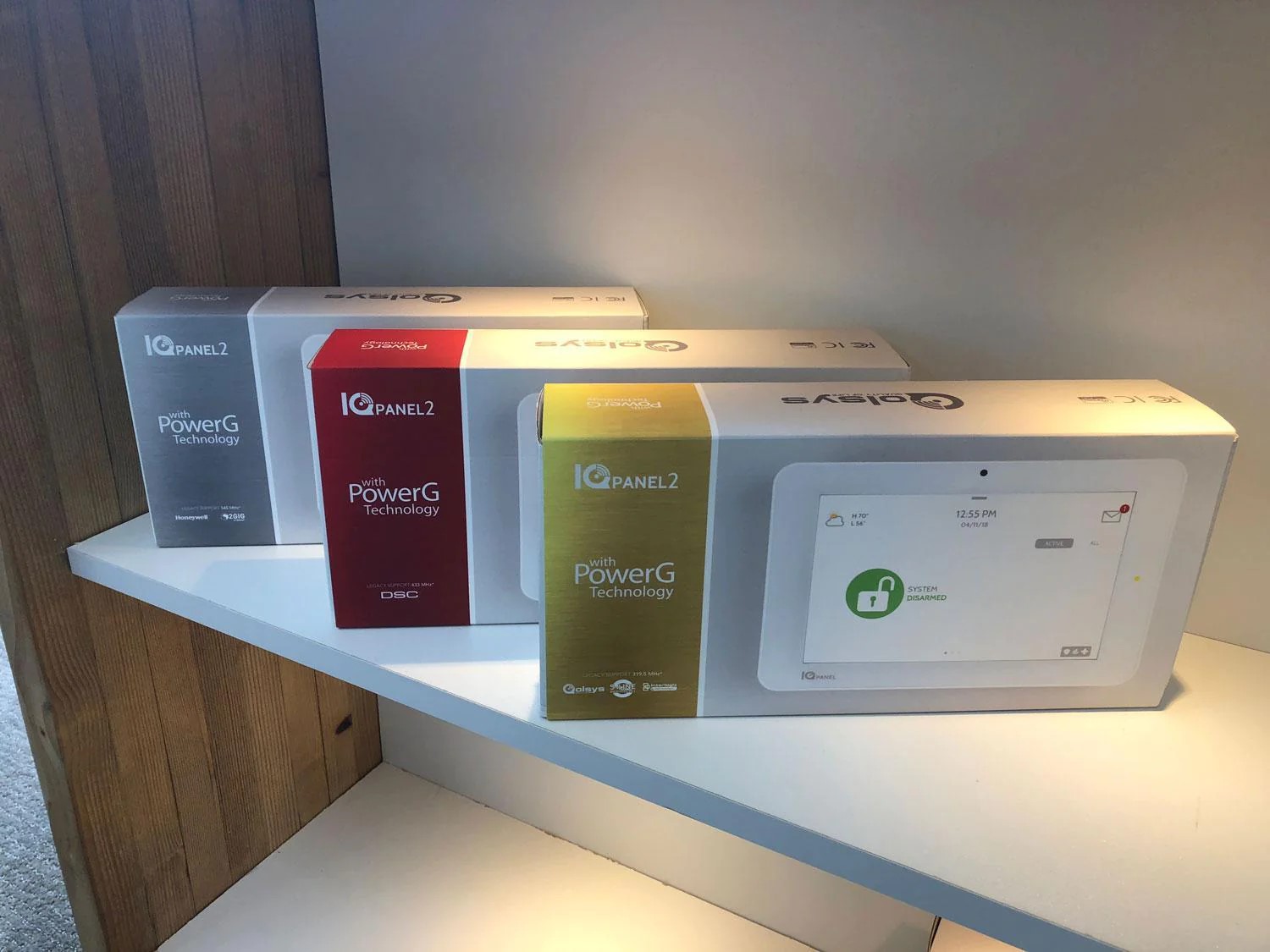

Articles
How Much To Sell Candles For
Modified: December 7, 2023
Discover the perfect pricing strategy for selling candles with our comprehensive articles. Find out how much to sell candles for to maximize your profits and attract customers.
(Many of the links in this article redirect to a specific reviewed product. Your purchase of these products through affiliate links helps to generate commission for Storables.com, at no extra cost. Learn more)
Introduction
Selling candles can be a lucrative business venture, with a growing demand for these comforting and aromatic products. Whether you are starting a small candle business or looking to establish the pricing for your handmade creations, determining how much to sell candles for can be a challenging task.
Setting the right price for your candles requires careful consideration of various factors, such as the cost of materials, labor, and overhead expenses, as well as market trends and customer preferences. In this article, we will delve into the key factors to consider and the steps to follow in order to determine the ideal pricing for your candles.
Before diving into the pricing strategies, it is important to understand that there is no one-size-fits-all approach when it comes to setting candle prices. Different candle makers have unique circumstances and goals, and pricing should reflect those factors. It is crucial to strike a balance between profitability and competitiveness.
So, let’s explore the factors to consider and delve into the process of determining the right price for your candles.
Key Takeaways:
- Determining the ideal price for your candles involves considering factors like material cost, labor, market trends, and customer preferences. Market research and competitor analysis are crucial for effective pricing strategies.
- Accurately calculating the cost of your candles and establishing a suitable profit margin are essential steps in the pricing process. Implementing various pricing strategies and regularly reviewing and adjusting your pricing strategy based on market conditions are key to success.
Read more: How Much Can You Make Selling Candles
Factors to Consider Before Pricing Candles
When it comes to pricing your candles, it is essential to consider several factors that can impact the overall cost and profitability of your business. Here are some key factors to keep in mind:
- Cost of Materials: The cost of materials used to make your candles, including wax, wicks, fragrance oils, and packaging, will play a significant role in determining the selling price. It’s important to carefully calculate the cost of each ingredient and factor it into your pricing strategy.
- Labor and Overhead Expenses: Consider the time and effort spent on making each candle, as well as the overhead expenses associated with running your business, such as rent, utilities, and marketing. These costs should be distributed among your candles to ensure you cover all your expenses and make a profit.
- Product Quality: The quality of your candles will influence the perceived value and, ultimately, the price you can charge. High-quality materials, attention to detail in craftsmanship, and unique designs can justify a higher price point compared to generic candles on the market.
- Target Market: Understanding your target market is crucial for pricing your candles effectively. Consider factors such as their income levels, preferences, and purchasing power. Are you targeting budget-conscious customers or those who appreciate luxury candles? Tailor your pricing strategy to align with your target market’s expectations.
- Competitor Analysis: Analyze the pricing strategies of your competitors. Look at similar candles in terms of quality, size, and style to get a sense of the prevailing market rates. This will help you position your candles competitively and determine whether you want to offer a higher-end or more affordable option.
- Branding and Packaging: Your branding and packaging have a significant influence on the perceived value of your candles. Invest in eye-catching and professional packaging that reflects the quality and uniqueness of your candles. This can justify a higher price and attract customers who appreciate the overall experience.
- Profit Margin: Determine the profit margin you want to achieve from each candle sale. Consider your long-term goals, overhead expenses, and desired income. Factor in the cost of materials and labor to ensure your profit margin is sustainable and allows for future growth.
By carefully considering these factors, you can develop a comprehensive understanding of the cost components and market dynamics that will shape your pricing strategy. In the next section, we will discuss the process of calculating the cost of your candles and establish an appropriate profit margin.
Cost Calculation for Candle Pricing
Calculating the cost of your candles is a critical step in the pricing process. It involves determining the expenses associated with producing each candle, including the cost of materials and labor. By accurately calculating your costs, you can set a competitive yet profitable selling price. Here’s how to do it:
- Materials: Start by listing all the materials needed to make your candles, such as wax, wicks, fragrance oils, containers, and packaging. Research the prices of these items from suppliers and calculate the cost per candle based on the quantity used for each batch.
- Labor: Assign a value to your time spent making each candle. Consider the hourly rate you would like to earn and estimate the time it takes to make each candle. Multiply your hourly rate by the number of hours spent on each candle to determine the labor cost per unit.
- Overhead Expenses: Include any overhead expenses required to run your candle-making business, such as rent, utilities, equipment, marketing, and insurance. Calculate the monthly cost of these expenses and divide it by the number of candles produced in that period to determine the overhead cost per unit.
- Total Cost: Add up the costs of materials, labor, and overhead expenses to determine the total cost per candle. This will give you a baseline cost that you need to cover with your selling price.
It is important to remember that this cost calculation does not include any profit margin yet. It provides you with a clear understanding of the minimum price that you should charge to cover your expenses. Additionally, consider the expected number of sales and the volume of candles you plan to produce to ensure your pricing strategy remains sustainable.
Once you have determined the cost per candle, you can move on to the next steps in the pricing process, including market research, establishing a profit margin, and deciding on a pricing strategy. These steps will help ensure that your candles are competitively priced and align with the expectations of your target market.
Market Research and Analysis
Market research is a crucial step in determining the pricing for your candles. It involves gathering information about the competitive landscape, understanding customer preferences, and identifying market trends. By conducting thorough market research, you can make well-informed decisions about the pricing of your candles. Here’s how to approach market research:
- Competitor Analysis: Identify your direct and indirect competitors in the candle industry. Study their pricing strategies, product offerings, and target markets. Note any unique selling points or value propositions that set them apart. This analysis will help you position your candles competitively and adjust your pricing accordingly.
- Customer Surveys and Feedback: Engage with your target audience through surveys, interviews, or social media platforms to understand their candle preferences and willingness to pay. Ask questions about pricing expectations, perceived value, and factors that influence their purchasing decisions. This valuable feedback will guide your pricing strategy and help you meet customer expectations.
- Market Trends: Stay up-to-date with the latest trends in the candle market. Are there specific scents or designs that are currently in high demand? Are there any emerging consumer preferences, such as a preference for eco-friendly or sustainable candles? Understanding market trends will help you stay relevant and adjust your pricing and product offerings accordingly.
- Seasonal Demand: Consider the seasonality of the candle industry. Certain times of the year, such as the holiday season or Valentine’s Day, may experience increased demand for candles. Adjust your pricing strategy accordingly by offering seasonal promotions or creating limited edition candles to capitalize on these opportunities.
- Target Market Analysis: Understand your target market’s purchasing power and price sensitivity. Analyze demographic data, such as age, income, and location, to determine their ability to afford your candles. This analysis will help you identify pricing tiers and customize your offerings to different market segments.
By conducting thorough market research and analysis, you can gain valuable insights into your target market, competitor pricing strategies, and current market trends. Utilize these findings to make informed decisions about your candle prices and ensure that your offerings are competitive and appealing to your customers.
Consider the cost of materials, time spent making the candles, and desired profit margin when determining the selling price. Research similar products to gauge market prices.
Establishing the Profit Margin
Establishing the profit margin for your candles is a critical step in the pricing process. The profit margin represents the amount of profit you aim to earn from each candle sale after covering all your costs. Here’s how to establish a suitable profit margin:
- Set Financial Goals: Define your financial goals and determine the amount of profit you want to make from your candle business. Consider your desired income, overhead expenses, and long-term growth plans. This will help you establish a realistic profit margin that aligns with your objectives.
- Calculate the Breakeven Point: Determine the number of candles you need to sell in order to cover your costs and reach the breakeven point. This includes the cost of materials, labor, and overhead expenses. Knowing your breakeven point will give you a clear understanding of the minimum number of sales required to start generating a profit.
- Add a Percentage to Cover Profit: Add a percentage to your breakeven cost to establish the profit margin. This percentage should be based on your financial goals and the level of competition in the market. Consider factors such as uniqueness of your candles, quality, and customer demand. Typically, profit margins range from 20% to 50% of the cost price, but it ultimately depends on your specific circumstances.
- Consider Price Sensitivity: Take into account the price sensitivity of your target market. Evaluate how much customers are willing to pay for candles based on their perceived value, brand reputation, and purchasing power. Adjust your profit margin accordingly to ensure that your candles are priced competitively while still allowing for a reasonable profit.
It is important to strike a balance with your profit margin. While it’s crucial to aim for profitability, setting too high of a profit margin may lead to uncompetitive price points and deter potential customers. Conversely, setting the profit margin too low could jeopardize the sustainability of your business. Regularly review and adjust your profit margin in response to market conditions and changing business needs.
By establishing an appropriate profit margin, you can ensure that your candle business remains financially viable and competitive in the market. This will allow you to generate a satisfactory profit while delivering value to your customers.
Read more: Who Sells White Barn Candles
Pricing Strategies for Candles
When it comes to pricing your candles, there are several pricing strategies you can implement to attract customers, maximize profitability, and differentiate your products from the competition. Consider the following pricing strategies for your candle business:
- Cost-Based Pricing: This approach involves setting the price of your candles based on the total cost of materials, labor, and overhead expenses, plus a desired profit margin. This strategy ensures that you cover all your expenses and generate a profit. However, it is important to regularly review and adjust your costs to avoid overpricing or underpricing your candles.
- Value-Based Pricing: With this strategy, you set the price based on the perceived value and benefits that your candles offer to customers. Consider factors such as the quality of materials, unique fragrances, and aesthetic appeal. Highlight the value proposition of your candles through effective branding and marketing to justify a higher price point.
- Premium Pricing: If your candles offer a luxurious and exclusive experience, you may consider implementing a premium pricing strategy. Position your candles as high-end products and price them at a premium compared to mass-market alternatives. This strategy relies on creating a perception of exclusivity and targeting customers who are willing to pay a higher price for quality and craftsmanship.
- Psychological Pricing: Utilize pricing techniques that appeal to customers’ subconscious decision-making process. For example, setting prices just below round numbers (e.g., $9.99 instead of $10) can create the perception of a lower price. Experiment with different price points to find the most effective psychological pricing strategies for your target market.
- Bundling: Bundle multiple candles together or create candle sets to offer an attractive package at a slightly discounted price compared to buying individual candles. This strategy encourages customers to purchase more and increases the overall value perception of your offerings.
- Sales and Promotions: Implement periodic sales, discounts, or promotional offers to create urgency and incentivize customers to make a purchase. This strategy can help drive sales during slower periods or when introducing new products, limited editions, or seasonal collections.
It’s important to note that the choice of pricing strategy should align with your target market, brand positioning, and business goals. Regularly monitor market trends, customer feedback, and competitor pricing to ensure your pricing remains competitive and relevant.
Remember, pricing is not a one-time decision. Continuously analyze and adjust your pricing strategy based on market conditions, customer demands, and changes in your cost structure. By implementing effective pricing strategies, you can optimize revenue, increase customer satisfaction, and drive the success of your candle business.
Competitor Analysis
Performing a thorough competitor analysis is essential in understanding the competitive landscape of the candle industry and positioning your products effectively. By assessing your competitors’ pricing, product offerings, and marketing strategies, you can gain valuable insights to guide your own pricing decisions. Here’s how to conduct a competitor analysis:
- Identify Competitors: Make a list of candles businesses that operate within your target market or offer similar products. Look for both direct competitors, who offer candles with similar features and target the same customer base, as well as indirect competitors, who may have different product offerings but fulfill the same customer needs.
- Analyze Pricing Strategies: Examine the pricing strategies of your competitors. Note the price range they offer for different types of candles, including sizes, scents, and packaging. Identify any unique pricing tactics they employ, such as discounts, promotions, or loyalty programs. This analysis will help you understand the prevailing market rates and position your candles competitively.
- Assess Product Offerings: Evaluate your competitors’ range of candle products, including their sizes, fragrances, packaging, and any unique features or customizations. Consider how your own candles compare in terms of quality, uniqueness, and value proposition. Differentiating your offerings based on these factors can justify a higher price point and attract customers seeking something distinct.
- Study Branding and Marketing Strategies: Analyze your competitors’ branding, visual identity, and marketing messages. Look at their website, social media presence, and customer reviews to understand how they position and market their candles. Take note of any unique selling points they emphasize and consider how you can differentiate your own candles through branding and marketing efforts.
- Customer Reviews and Feedback: Explore customer reviews and feedback for your competitors’ candles. Pay attention to the positive and negative feedback, as this can reveal areas for improvement or potential gaps in the market. Use this information to fine-tune your own product offerings and pricing strategy to cater to unmet customer needs.
- Identify Opportunities and Differentiation: Based on your analysis, identify opportunities for differentiation in the market. Assess areas where your competitors may be lacking or where you can offer something unique. Utilize this information to develop pricing strategies that highlight the value and benefits of your candles compared to your competitors.
Remember, competitor analysis is an ongoing process. Continuously monitor your competitors’ activities, pricing adjustments, and new product launches. Stay up-to-date with market trends and adapt your pricing strategy accordingly to maintain competitiveness in the industry.
By conducting a comprehensive competitor analysis, you can gain valuable insights into the market dynamics, customer preferences, and pricing strategies within the candle industry. Utilize these findings to adjust your pricing and differentiate your candles effectively, ultimately attracting more customers and increasing your business’s success.
Conclusion
Setting the right price for your candles is crucial for the success of your business. By considering factors such as the cost of materials, labor, and overhead expenses, as well as market trends and customer preferences, you can determine the ideal pricing strategy. Conducting market research and competitor analysis will further enhance your understanding of the competitive landscape and help you position your candles effectively.
Calculating the cost of your candles accurately is essential in determining the baseline price that covers all your expenses. From there, you can establish a suitable profit margin that aligns with your financial goals and customer expectations. Various pricing strategies, such as cost-based pricing, value-based pricing, or premium pricing, enable you to differentiate your products and cater to your target market’s needs.
However, pricing decisions are not set in stone. It’s important to regularly review and adjust your pricing strategy based on market conditions, customer feedback, and changes in your cost structure. Stay informed about market trends and competitors’ pricing to ensure your candles remain competitive in the industry.
Remember that finding the optimal price point is a delicate balance between profitability and market competitiveness. Strive to deliver value to your customers while ensuring your business remains financially sustainable.
In conclusion, pricing your candles requires careful consideration of various factors. By employing effective pricing strategies, conducting thorough market research, and keeping an eye on your competitors, you can confidently determine the right price for your candles. With a well-thought-out pricing strategy, you can attract customers, maximize profitability, and build a successful candle business.
Frequently Asked Questions about How Much To Sell Candles For
Was this page helpful?
At Storables.com, we guarantee accurate and reliable information. Our content, validated by Expert Board Contributors, is crafted following stringent Editorial Policies. We're committed to providing you with well-researched, expert-backed insights for all your informational needs.















0 thoughts on “How Much To Sell Candles For”